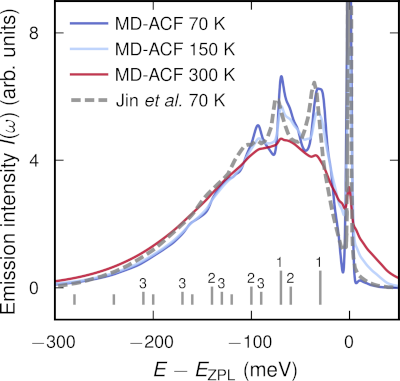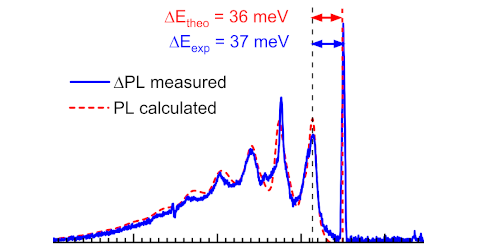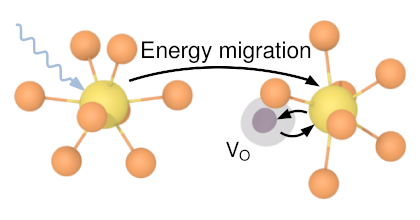Optical line shapes of color centers in solids from classical autocorrelation functions
C. Linderälv,
N. Österbacka,
J. Wiktor,
and
P. Erhart
arXiv:2408.06908
doi: 10.48550/arXiv.2408.06908
zenodo: 13284738
(associated data)
Download PDF

Color centers play key roles in applications, including, e.g., solid state lighting and quantum information technology, for which the coupling between their optical and vibrational properties is crucial. Established methodologies for predicting the optical lineshapes of such emitters rely on the generating function (GF) approach and impose tight constraints on the shape of and relationship between the ground and excited state landscapes, which limits their application range. Here, we describe an approach based on direct sampling of the underlying auto-correlation functions through molecular dynamics simulations (MD-ACF) that overcomes these restrictions. The energy landscapes are represented by a machine-learned potential, which provides an accurate yet efficient description of both the ground and excited state landscapes through a single model, guaranteeing size-consistent predictions. We apply this methodology to the (VSiVC)kk0 divacancy defect in 4H-SiC, a prototypical color center, which has been studied both experimentally and theoretically. We demonstrate that at low temperatures the present MD-ACF approach yields predictions in agreement with earlier GF calculations. Unlike the latter it is, however, also applicable at high temperatures as it is not subject to the same limitations, especially with respect to handling of anharmonicity, and can be applied to study non-crystalline materials. While we discuss remaining challenges and possible extensions, the methodology presented here already holds the potential to substantially widen the range of computational predictions of the optical properties of color centers and related defects, especially for cases with pronounced anharmonicity and/or large differences between the initial and final states.



